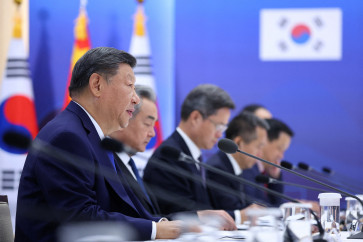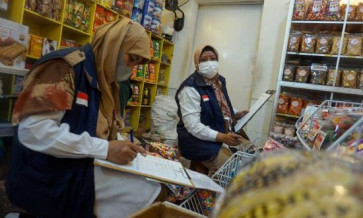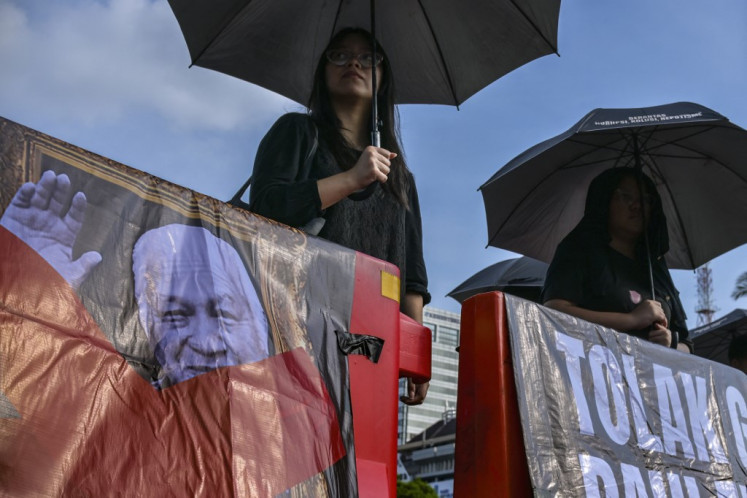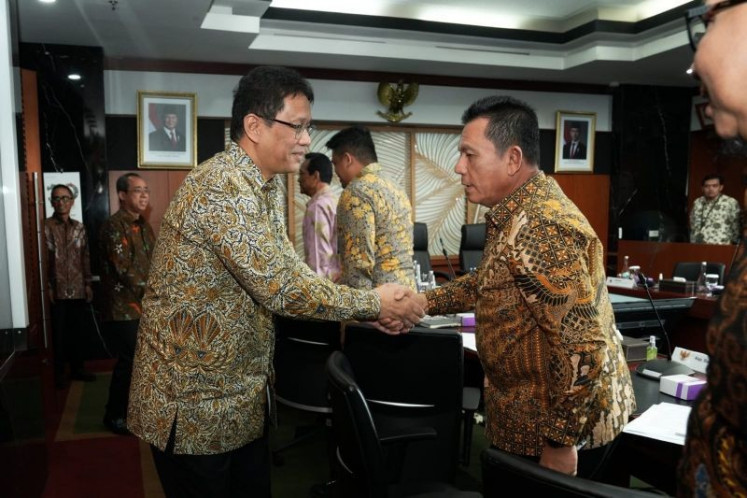Popular Reads
Top Results
Can't find what you're looking for?
View all search resultsPopular Reads
Top Results
Can't find what you're looking for?
View all search resultsFashion Flair: Saving the Batik Tradition
(Courtesy of Mediatama Binakreasi)Nearly seven years after the traditional dyeing technique of batik was included on UNESCO’s list of items of intangible cultural heritage, the artisans still have a battle on their hands
Change text size
Gift Premium Articles
to Anyone
(Courtesy of Mediatama Binakreasi)
Nearly seven years after the traditional dyeing technique of batik was included on UNESCO’s list of items of intangible cultural heritage, the artisans still have a battle on their hands.
The influx of fabrics using batik patterns was inevitable without regulations, following the government’s decision to designate Oct. 2 as National Batik Day, plus the requirement to wear batik on Fridays implemented at public institutions, including schools.
As demand for batik increased, more people opted for affordable options. Not only are they alien to the Indonesian batik world, textiles simply using batik print motifs are an insult to the age-old batik tradition, according to artisans.
“Many have little knowledge about batik and that explains the low appreciation of it. But there are many cases where textiles with batik prints are sold as original batik at high prices. The buyers only found out about it later after someone else, or even the seamstress, pointed it out to them,” said Komarudin Kudiya, the owner of Bandung-based Batik Komar.
“Without regulations to protect the cultural heritage, we consider this an emergency that needs attention from the government.”
In a bid to protect the originality of batik dyeing techniques and processing, a recent exhibition involving a team of curators led by Komarudin was an effort to educate both traders and consumers.
Titled WARISAN — short for Wasiat Agung Negeri Nusantara (The Archipelago’s Inheritance) — the inaugural exhibition was held from Aug. 25 to 28 at the Jakarta Convention Center, Central Jakarta, by event organizer Mediatama Binakreasi. Officiating was chairperson of the National Handicraft Council Mufidah Jusuf Kalla, the wife of the Vice President.
The curation team, comprising batik artisans on the frontline of the industry, checked each of the 80 booths every day to ensure the exhibition was free from products other than genuine batik.
Team members were Mariana Sutandi of Parang Kencana, Dudung Alie Syahbana of Dudung Tie Dye from Pekalongan, Hani Winotosastro of Yogyakarta’s Batik Winotosastro and Romi Oktabirawa of Wirokuto Batik, also from Pekalongan.
Mariana said the products allowed at the exhibition had to meet at least two of four criteria: either the motif was drawn using traditional tools to make batik tulis, or used copper stamps to make batik cap (stamp), they were a combination of the two, but all must use the hot wax-resist dye technique.
“Using low temperature resist is similar to screen printing and it’s a technique unrecognized in batik tradition,” she said.
Romi added that the team also checked whether the artisans actually used the required handmade traditional spouting tools and brushes to draw the motifs in batik tulis.
“We could tell by the uneven dots and lines of the motifs which tools were used. They are not defects, on the contrary the uneven motifs indicate how genuine the batik is.”
Exhibitors who failed to comply with the terms of the contract with the organizer did not receive a certificate of participation. By the second day of the exhibition 14 booths were listed for trying to sell non-batik items.
“This exhibition is more like a pilot project to protect the national handicraft. We expect the government to issue a regulation that will require curation for any handicraft exhibitions to verify the authenticity and quality of the items,” said Dudung.
A vendor shows her cloth at the Bendoro Batik Tulis booth. (Photo by Donny Fernando)
BATIK HAVEN
With most of the major batik manufacturers in Java and Bali taking part in the WARISAN exhibition, there was high appreciation from visitors.
Lawyer Susan Zamril came to find batik kumpeni to add to her collection. “It has fun motifs that fit any occasion,” she said.
Batik kumpeni, also sometimes referred to as kompeni, is the term for batik originally produced in Cirebon, West Java, by Dutch traders, hence its name derived from the word “company”.
The motifs are similar to a wall relief that depicts the daily lives of people. It may comprise the drawings of soldiers, farmers, pets or even Volkswagen cars and scooters.
Susan bought three examples of the batik with different motifs at the booth of El-Shifa Batik from Cirebon.
Eli, the artisan from the manufacturer, said a piece of the batik on cotton was priced at only Rp 125,000 but the exclusive motifs on silk reached Rp 2 million.
“The price is worth it for the months of hand drawing the motifs,” she said.
Another unique batik came from Yogyakarta-based Gee Batik, owned by Sugeng Waskito,that produces genuine batik with modern motifs and patterns, a combination of Picasso-style paintings and traditional patterns of Bali and Yogyakarta.
“We import the silk from Germany and India but all the batik process is done in our workshop,” said Rini, the booth attendant.
The manufacturer not only produces pieces of cloth, but also clothing, with the full batik process taking place after the cutting is done.
A fashion show of batik’s new looks and charity auction of the pieces “Muhammad Ali”, which was sold for Rp 8 million, and “Taman Telaga Teratai” (Lotus Pond), which fetched Rp 7.5 million, held on the closing day, were part of the effort to put batik back on its proper pedestal.
“Batik is not only a commodity. It is a spiritual visualization of the life experience and dreams of the artisans. Batik is about human skill, not technology. We have all the resources and it is high time to encourage all Indonesians to appreciate batik more,” said Romi.











